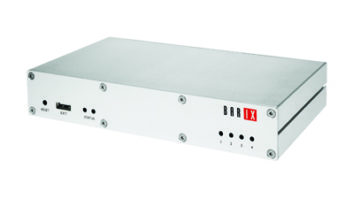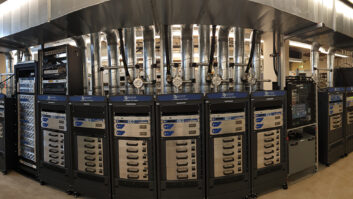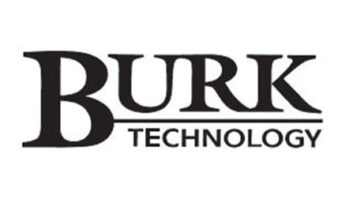Technology cost and depreciation
Dec 1, 2003 12:00 PM, By Kevin McNamara, CNE
Deploying technology is a double-edged sword � on one hand, it generally causes a particular task to be performed with greater efficiency; on the other hand, the value of the investment for state-of-the-art equipment decreases substantially from the day it is purchased, similar to the value of a new car as soon as it is driven off the dealer’s lot.

Thefundamental laws guiding technology
It is fair to say that three fundamental laws, laws promulgated by guys named Moore, Parkinson and Gates, have guided most of the advancements of technology during the past 30 years. Like Nostradamus, these visionaries correctly predicted, and in some cases created, the likely progression of technology that we now take for granted.
Moore’s Law
The original Moore’s Law derives from a 1965 speech given by Gordon Moore, later a founder of Intel, in which he observed that the number of micro components that could be placed in an integrated circuit (microchip) of the lowest manufacturing cost was doubling every year and that this trend would likely continue into the future. Moore’s law was recently revised to account for the slow down in pace of the microchip industry. Currently, Moore’s law states that the doubling now occurs every 18 months.
Parkinson’s Law of Data
What he actually said was �work expands to fill the time available for its completion, and subordinates multiply at a fixed rate, regardless of the amount of work produced.� But that was in 1957. Strangely enough, semiconductor memory wasn’t a big deal at that time, so more recently someone in the Silicon Valley modified it to state, �data expands to fill the space available for storage.� This less known truism from the mid-80s poses that the memory usage of evolving systems tends to double roughly once every 18 months. Luckily, for the same money, memory density also tends to double once every 18 months. Unfortunately, the laws of physics tell us that there is a limit to how small an area a bit can take up.
Gates’ Law
�The speed of software halves every 18 months.� This oft-cited law is an ironic comment on the tendency of software bloat to outpace the every-18-month doubling in hardware capacity per dollar predicted by Moore’s Law.
Technology � depreciation and cost
When talking about equipment, depreciation can be categorized into three specific types: physical, economic and obsolescence.
Physical depreciation is defined as deterioration caused by physical wear and tear, malfunction, breakage or other type of destruction.
Economic depreciation can have two definitions:
- The allocation of the cost of an asset over a period of time for accounting and tax purposes.
- A decline in the value of a property due to general wear and tear or obsolescence; opposite of appreciation.
People trained to deal with finances primarily use these definitions to determine the tax consequences of capital purchases that, in most cases, can reduce the amount of annual taxes paid by an entity.
The computer’s operating system sets the fundamental rules of operation. Subsequent upgrades may render programs worthless.

Functional obsolescence can occur for a number of reasons, including lack of support and replacement parts from a manufacturer, not compatible with newer technologies or perhaps replaced by more efficient devices.
We, as engineers and technology managers, view capital purchases from an entirely different perspective:
- Does the purchase increase operation reliability?
- Can it reduce maintenance costs?
- Will it improve the quality of the final product?
- Does it fit with our growth plan?
The issue of increased reliability is relative. Generally speaking, if we are replacing an ailing piece of equipment, shouldn’t it be assumed that it is more reliable? The answer is �maybe.� Consider the scenario of simply replacing a dated analog (cart) playback system with a server-based digital storage system. Is that dual-processor bit screamer more reliable than the old 30-pound cart player? The properly functioning cart player will probably withstand most acts of God without even a groan, while a little zap of well placed static electricity might render that state-of-the-art server nothing more than a fancy door stop. The point is that there are additional costs associated with the deployment of new technologies. Improved grounding, additional cooling and modifications of rooms to maintain a certain level of cleanliness are just a few of the considerations to maintain proper reliability. These items represent additional expenses that should be factored into any technology purchase. By addressing these points up front, you should expect that maintenance costs should also reduce over time.
Improving the quality of the final product might be another goal of an equipment upgrade. This is how most non-techie types judge the value of the investment. Engineers are impressed by a widget that can send 1,000 parameters of operational data to our PDA, but nobody else really cares about that; they want to hear an improvement, they want to believe that this piece of equipment is drawing listeners (and advertisers) from every part of the FM spectrum.
Perhaps the most enticing benefit of the current and future generation of technologies is that it typically is designed to support earlier versions of software and hardware. Be aware of trends in hardware and software versions. If something is based on a CPU, there is some form of operating system setting the fundamental rules of operation. Most devices permit firmware upgrades through a physical change of hardware or some form of software patch. Patches and upgrades are issued to address certain bugs, add new features, exploit features of new hardware platforms or address compatibility issues with new or upgraded operating systems. While all of these are important, the last item is the one to pay close attention to. Be aware of announcements of major changes to operating systems. Major changes in operating system software may cause a software application to become obsolete. Get commitments from the manufacturers of the software or hardware you plan on purchasing, that they will support new technologies as they emerge in a timely fashion or you might be replacing all that equipment in a short period of time.
Here’s one more law: Kevin’s Law. Equipment you buy today will only have a fraction of the useful life of things bought 20 years ago, but the amount of usefulness per square inch will increase exponentially every 12 months.
McNamara is president of Applied Wireless, Elkins Park, PA.












